How to Find Micro Influencers in 2026 (That Actually Convert)

In 2026, micro influencers—everyday creators with 1,000–100,000 followers—are more valuable than ever. Why? They feel relatable, spark real conversations, and turn simple brand mentions into content their followers trust.
Unlike big-name campaigns, micro influencer partnerships are win-win: your brand gets genuine reach, and the creator gets fresh material to share in their own style. Send them a box of products, and they’ll turn it into daily routines, unboxings, or “try-on” reels that feel natural, not forced.
This is why more brands are shifting budget from splashy influencer spends to smaller, authentic collabs that actually convert. And thanks to smarter social listening, you can spot these creators early—the ones already talking about you, even if they didn’t tag you.
In this guide, you’ll see how to find micro influencers who don’t just post but make your brand part of their everyday story.
Why micro influencers matter more than ever
In 2025, people crave authenticity, and micro influencers deliver it. These smaller creators often build tight, loyal communities around niche interests, whether it’s skincare for sensitive skin, budget-friendly travel, or styling secondhand fashion finds. Their followers see them as real people, not billboards.
This trust factor is exactly why more brands are moving budget from big, one-off macro deals to ongoing micro partnerships. A single honest review or day-in-the-life video can spark conversations that big ads miss entirely. Better yet, it works across industries—fashion, wellness, fitness, tech, food, you name it.
The bottom line? Micro influencer content lives longer, feels more organic, and helps your brand show up in moments that feel real, leading to higher engagement and better ROI.
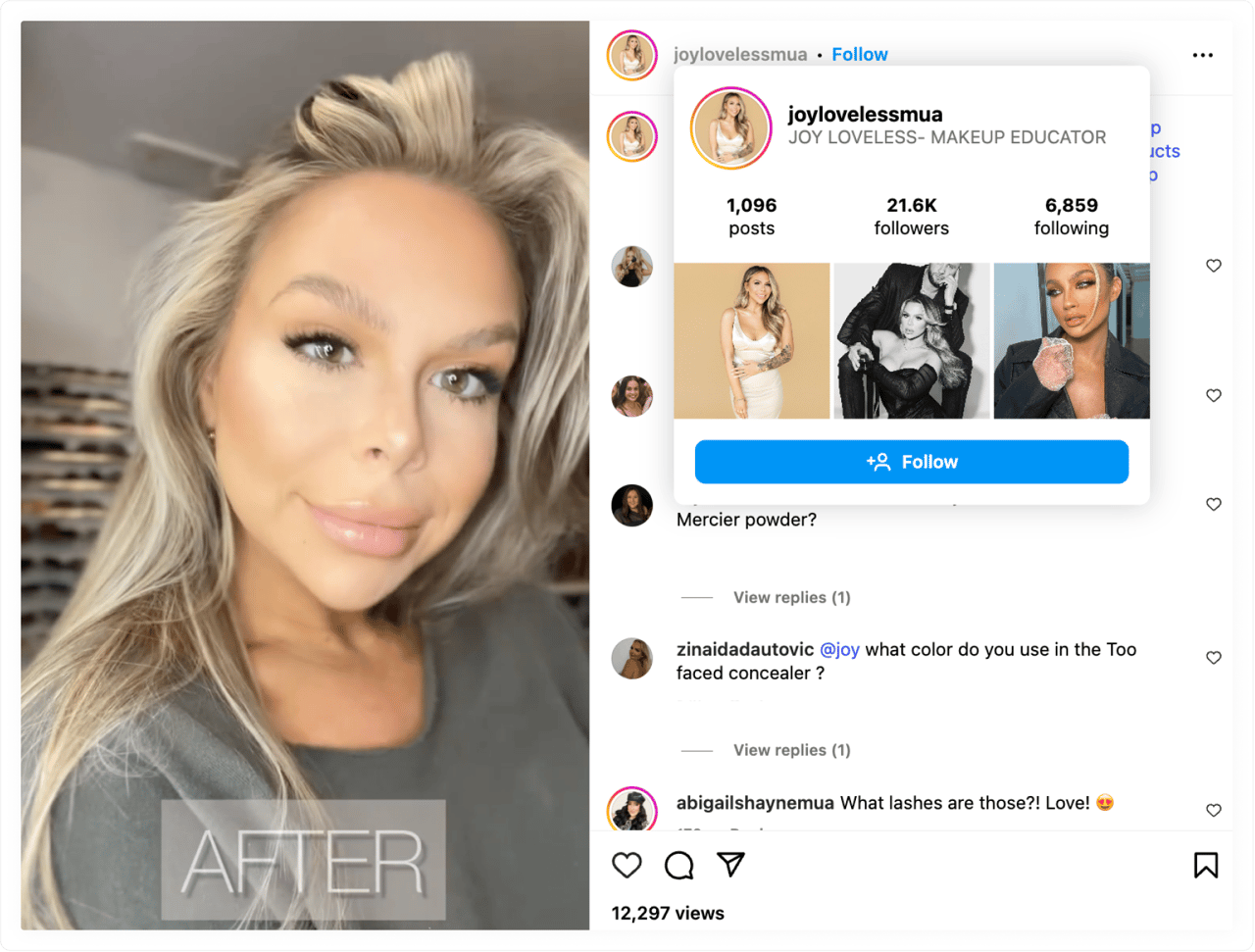

Source: Instagram
Joy is one of the Instagram influencers with a 21.6k follower count, speaking to her target audience about fashion, skincare, and beauty. One of her reels under #dailyroutine hashtags sparked 12k views and 92 comments, in which her followers ask about the products she is using. Even though she is not a macro influencer, her opinion is relevant and presents a perfect collaboration opportunity.
What makes a great micro influencer for your brand?
High engagement always comes first—real likes, shares, and thoughtful comments show people are paying attention. Content relevance matters just as much. The best micro influencers naturally cover topics your audience cares about, so your product fits right in.
Here's how a fashion designer, Sarah Bowditch, used the 19k followers of Andrea, a fashionable mum on Instagram. She delivered her headbands for Andrea and her daughter, making great content under the #twinningtuesday hashtag, which ended up benefiting both the content creator and the fashion brand. The post sparked interest with 100+ comments and nearly a thousand likes.
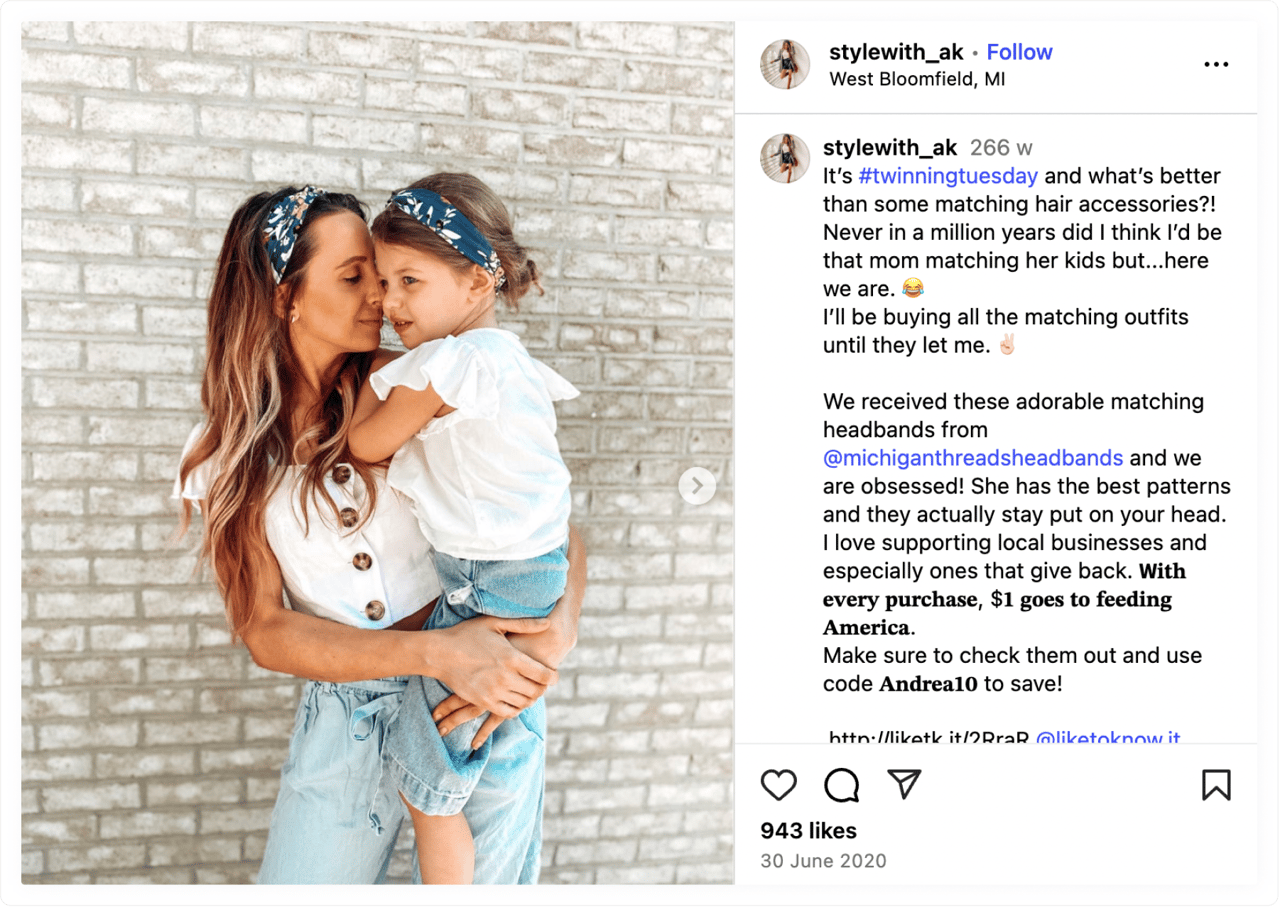

Source: Instagram
Alignment with your brand’s values and tone is key. Their style should feel like an organic match, not a forced partnership. Community trust is another signal to watch: look at how followers interact with them in the comments—are they asking genuine questions or tagging friends?
On top of that, do a sentiment analysis of the comments to ensure they are well-received. A large number of followers and comments doesn't necessarily make a larger influencer that people will actually look up to.
Consistent, quality content keeps an influencer’s audience coming back. Crisp visuals, regular posts, and a clear point of view make all the difference. And don’t forget platform fit—Gen Z trends thrive on TikTok, while lifestyle shots shine on Instagram, and tutorials do well on YouTube.
Let's take a look at another matching outfits post. Even though Amy only has around 8k followers, this single post inspired more than 800 likes and 200 comments. For Amy, it was a great opportunity to subtly promote Pull&Bear and their new color for that season.
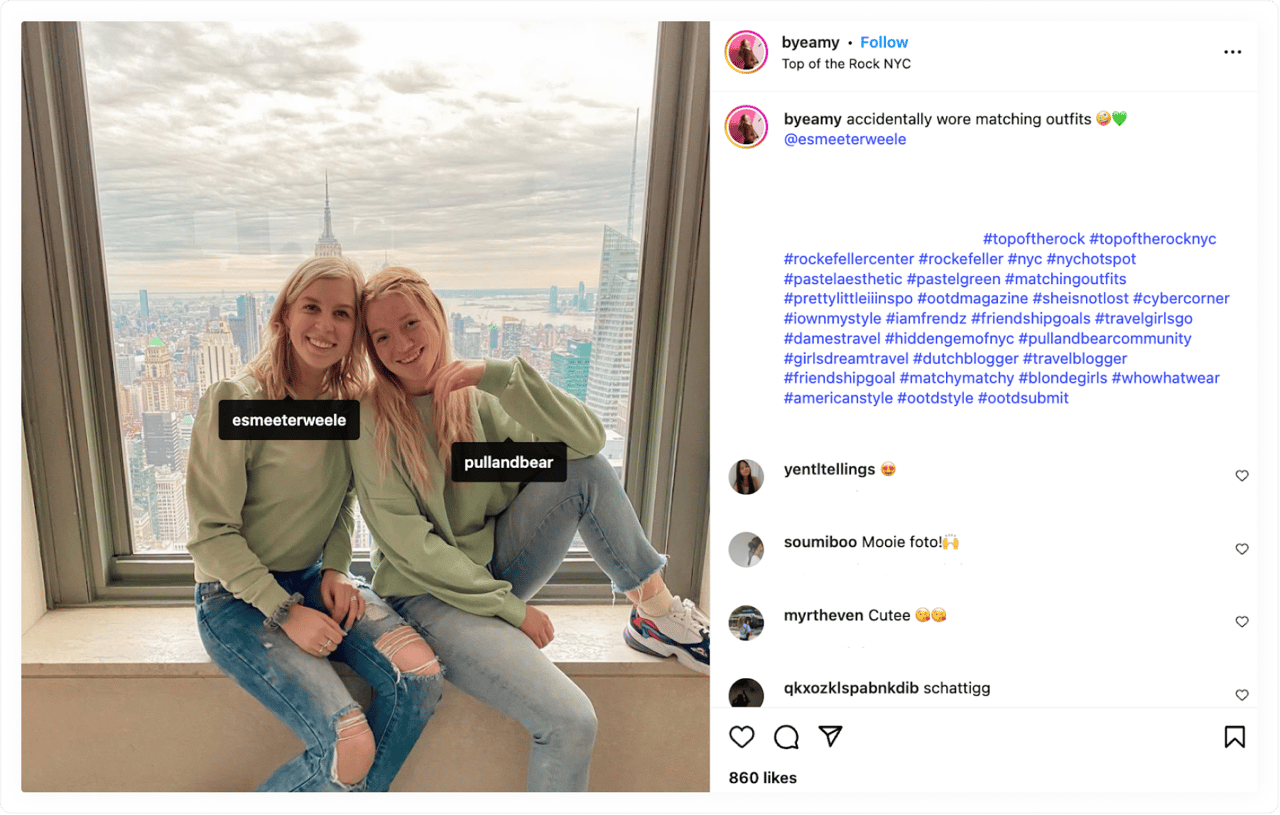

Source: Instagram
How to find micro influencers (step-by-step)
When we think of how to find micro influencers, we start from the obvious: scouting through social media platforms. The best way to find the right micro influencers for your brand, though, is to develop a structured process, one that balances data with context, and relevance with creativity.
Whether you’re running your first micro influencer campaign or looking to scale, this step-by-step guide will help you discover relevant influencers who actually make a difference. From using social listening tools to tapping into influencer marketing platforms, you’ll learn how to find influencers who align with your message, create high-quality content, and reach the audiences that matter across your key marketing channels.
1. Define your goals and find your niche micro audience
Before you do anything else, get clear on what you want from a micro influencer campaign. Are you chasing reach, conversions, user-generated content, or brand awareness? Pin down your ideal audience—what do they care about, and where do they spend time online? Knowing this helps you spot the right micro influencers who already speak to that niche.
If you're not sure where to start, digging into your target audience analysis can reveal what kind of content resonates most, which platforms your niche audience prefers, and what values your chosen influencers should reflect.
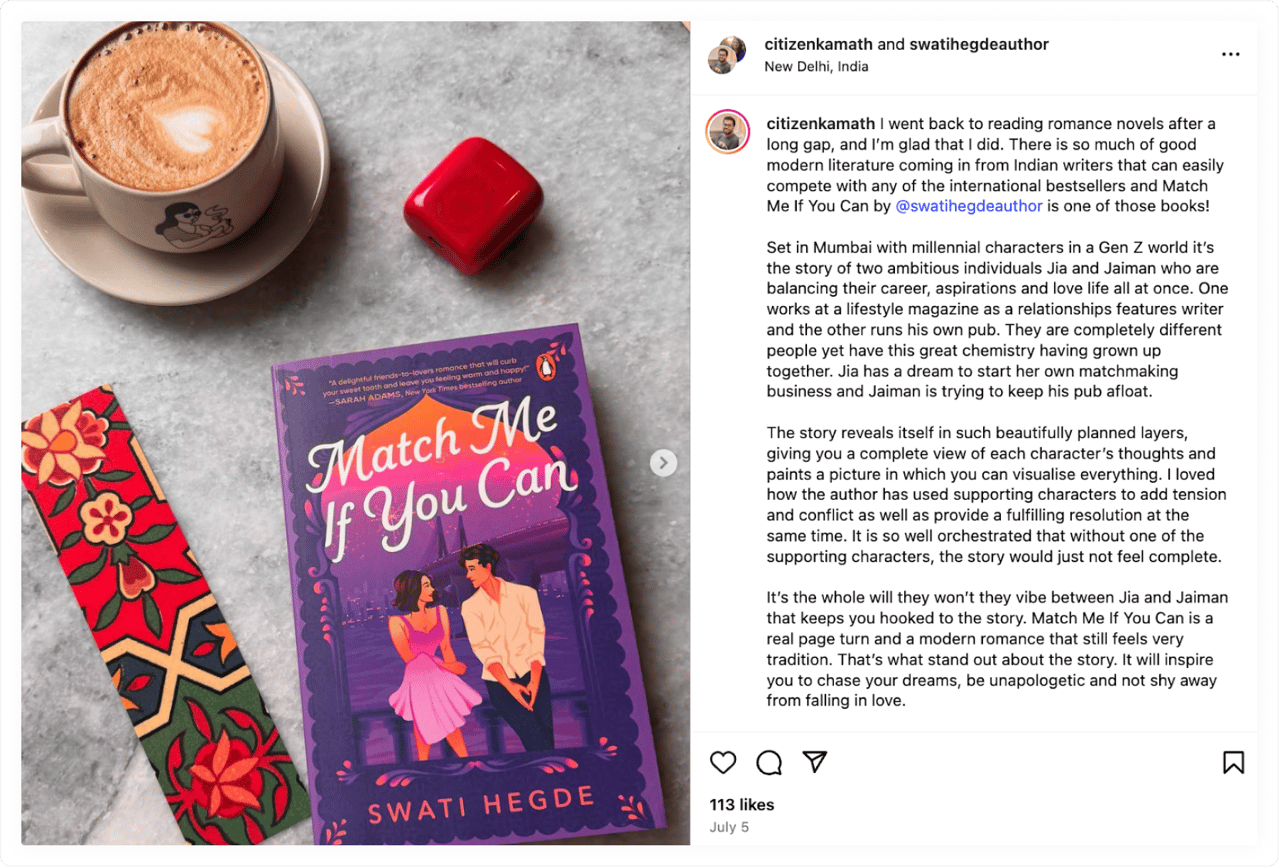

Source: Instagram
An avid book reader in India makes for a perfect social media influencer with over 20k followers and insights into the books he recommends. To find him, a publishing brand can simply check who's tagging their authors online and reach out with a proposal.
2. Use social listening to surface authentic mentions
Chasing hashtags can waste hours of your time, though. Is there a shortcut? Glad you asked!
With a social listening tool like YouScan, you can uncover people already talking about your brand or category—even if they didn’t tag you. This makes it easy to find niche micro creators who genuinely use your product, post about it in their daily routines, or feature it in a YouTube influencer video or TikTok trend.
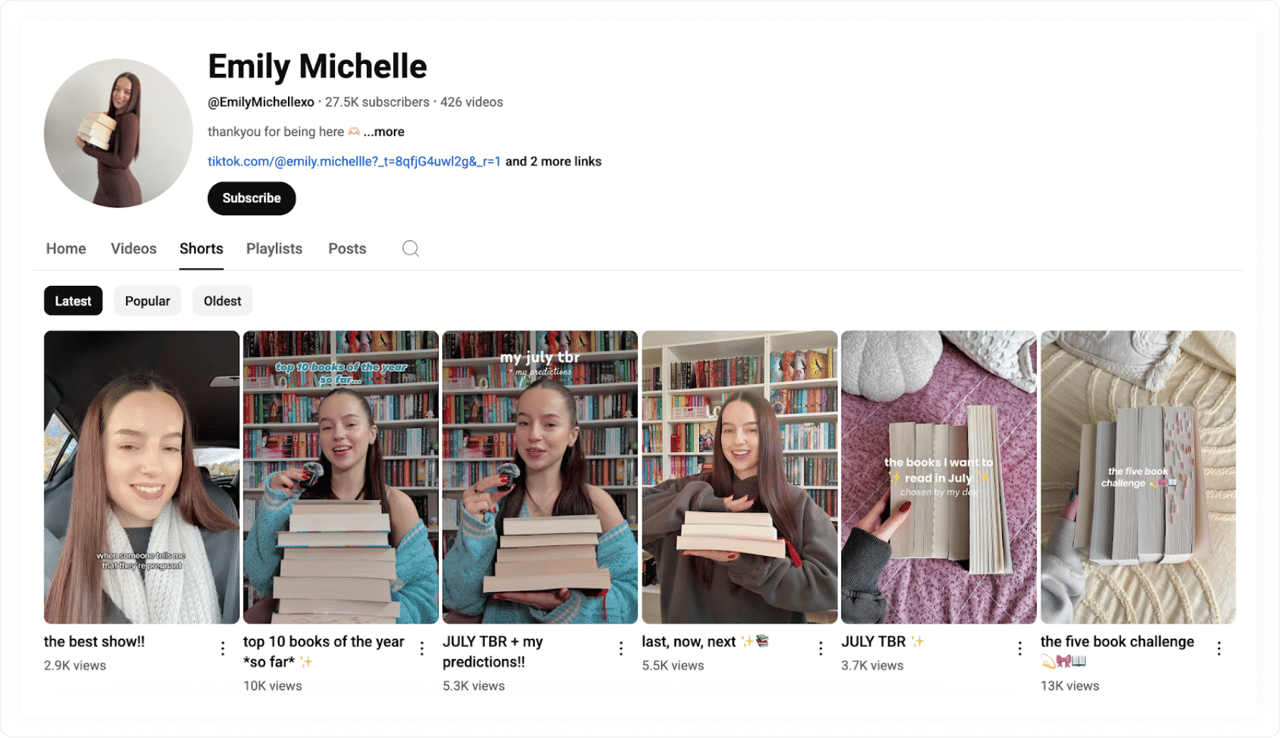

Source: YouTube
Emily, for example, is close to a macro influencer on TikTok, but has around 27k followers on YouTube, which makes her a micro influencer on that platform. Now, if you want to tap into the target audience that lives on YouTube, she'd be a perfect match for your next influencer marketing campaign.
Thanks to niche-specific hashtags, with the right filters, YouScan would have placed her on your radar quickly, narrowing down the list of influencers and potential brand ambassadors.


3. Explore influencer marketing agency databases (but don’t stop there)
Influencer search platforms and creator databases like CreatorIQ, Captiv8, or PopularPays can help you find thousands of profiles quickly. But remember: databases show who wants to be found.
In the influencer marketing industry, big names will be the ones that stand out. Smaller micro influencers might not show, and those are the ones you need. Social listening shows who’s already a fan. The best micro influencer campaigns combine both—look at who’s raising their hand and who’s organically talking.
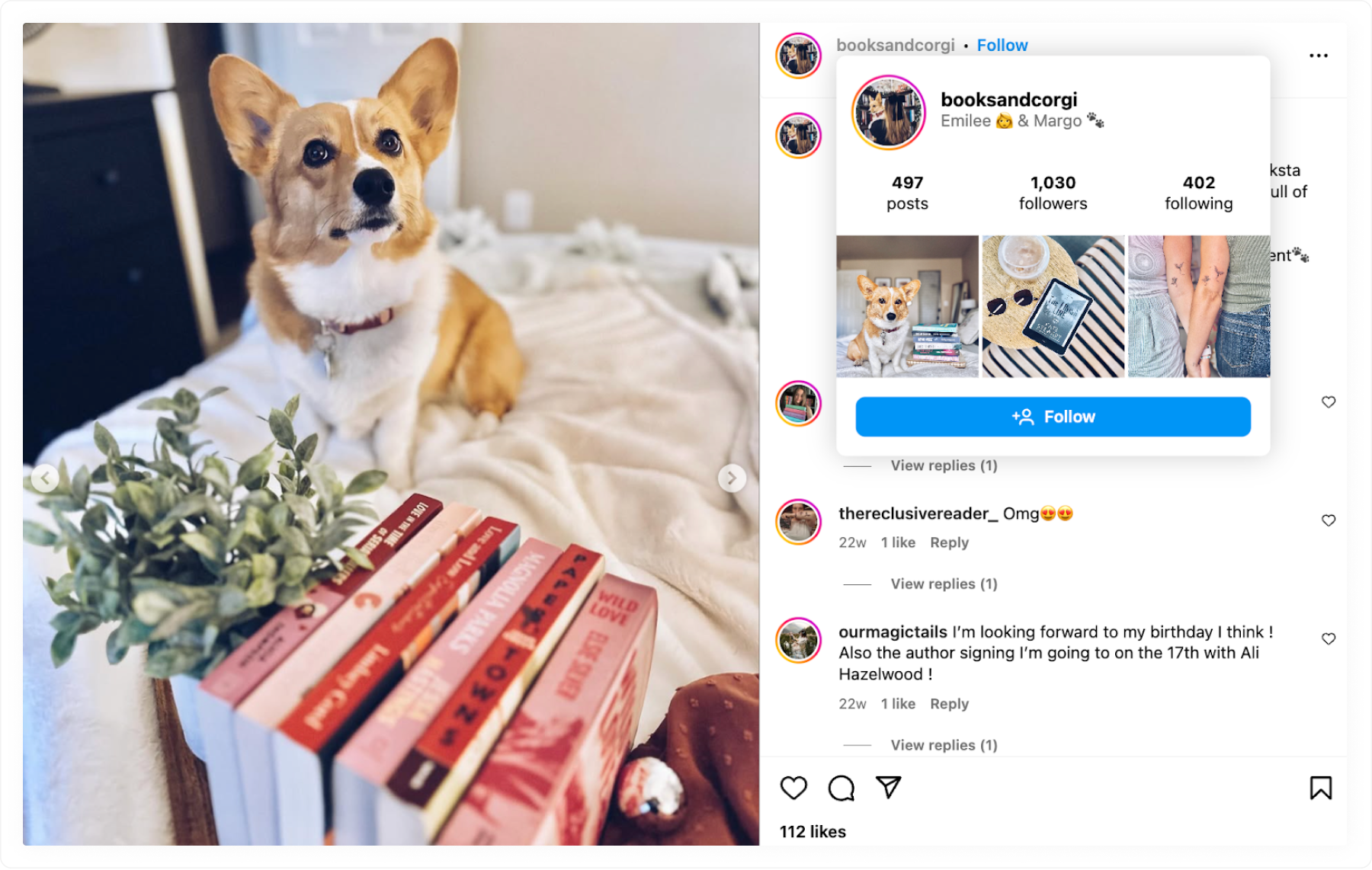

Source: Instagram
Pro tip: Run a quick competitor analysis to discover what the competition is doing, and more importantly, what they are missing. Use YouScan to discover every valuable mention of the concurrent brand that they wasted as an opportunity—and be the one to seize it!
For example, adorable Corgi here and his owner are just getting started with their social media profiles, and they are already favorite influencers for many users. Their authentic content aligns with the book brands, and it's just a matter of time before someone notices that window.
4. Check engagement metrics and quality content
Don’t let follower count fool you. Dig into real engagement metrics: how many likes, shares, saves, or comments do they get on average? The perfect micro influencers for your campaign are the ones with highly engaged audiences.
Read the comments—are people asking questions or tagging friends? That’s where your potential customers often show up.
Be cautious of fake followers or inflated engagement that doesn’t translate to actual influence. Use tools that can help you analyze patterns and spot red flags. Also, take a minute to scroll through their feed: is the content consistent, well-produced, and aligned with your brand’s values? Great content doesn’t have to be polished, but it should feel authentic and on-brand.
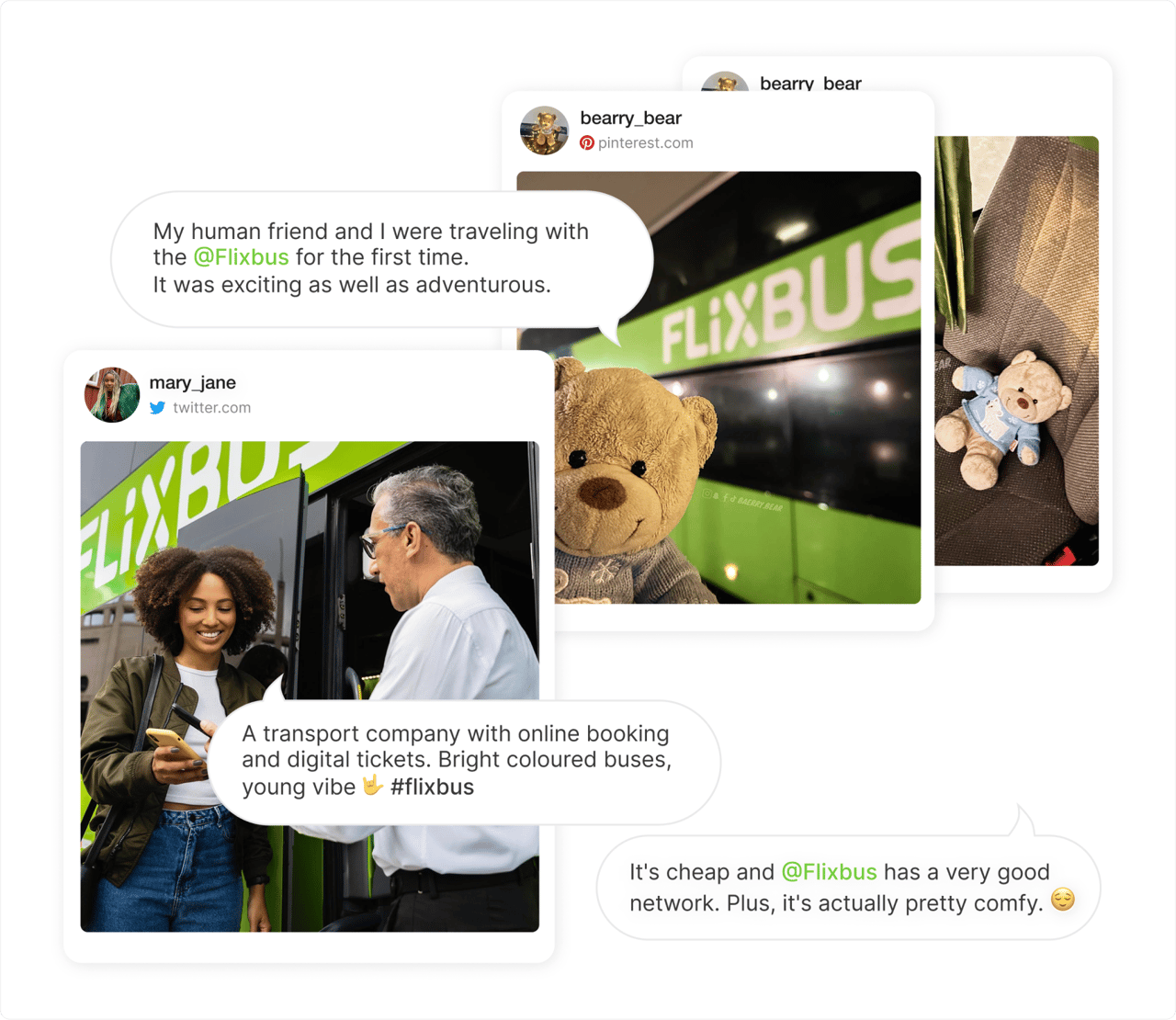

To go deeper, running a bit of market research on what types of creators your audience already responds to can help you fine-tune your search and avoid partnering with influencers who look good on paper but don’t spark real action.
5. Reach out to the right micro influencers with a personal offer
Generic DMs don’t work. Use what you learned through social listening to tailor your pitch: “We saw you mention our eco-friendly cleanser in your GRWM—love your take! Want to try our new launch?” Whether you’re approaching TikTok influencers, YouTube influencers, or niche micro creators on Instagram, show them you’re paying attention.
Let’s say you’re in the wellness space and come across a fitness influencer who regularly posts short workout routines and snack prep ideas. If you’ve seen them mention needing new gear or post about recovery products, that’s your way in. Instead of sending a templated outreach, message them with: “We saw your post about sore muscles after hill sprints—would you be up for testing our cooling recovery balm? We’d love to hear how it fits into your routine.” That one sentence signals that you’re not just pitching—you’re offering something relevant to their actual life.
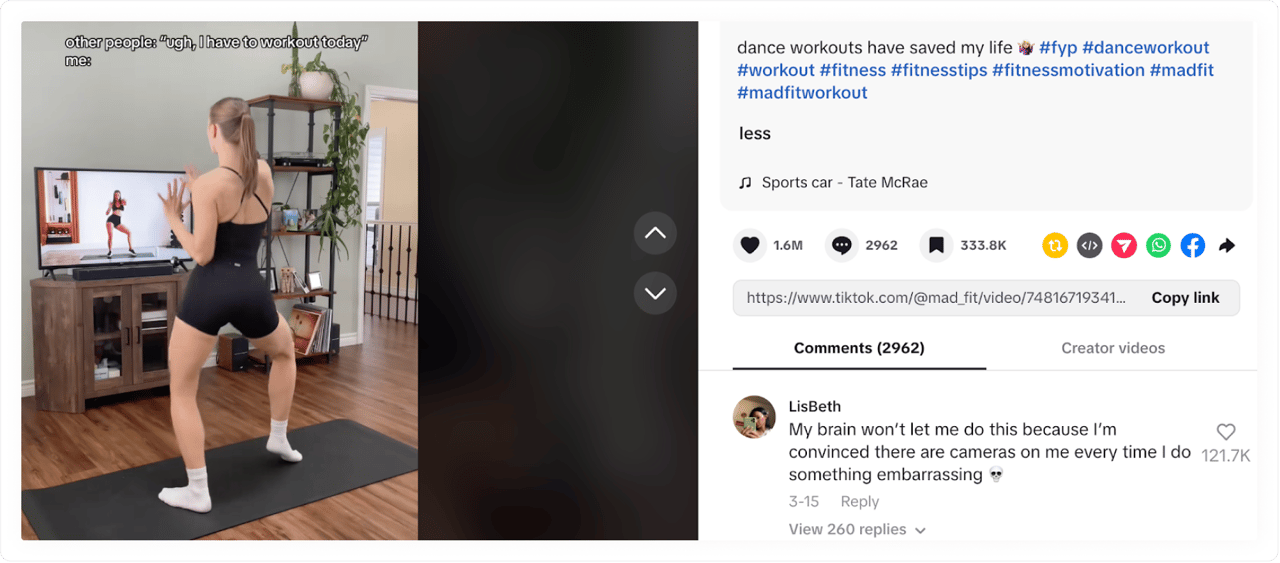

Source: TikTok
6. Track your micro influencer campaign results
Working with micro influencers doesn’t stop once the post goes live. After launch, keep an eye on how the content performs—both in numbers and in sentiment. Monitor relevant hashtags, story replies, comment sections, and any spikes in mentions to see what’s actually landing.
Strong collaborations can do more than build awareness—they can boost sales, generate user content, and help you gather feedback from people who are genuinely interested in your brand. Watch how their audience reacts: are they saving the post, tagging friends, or asking where to buy?
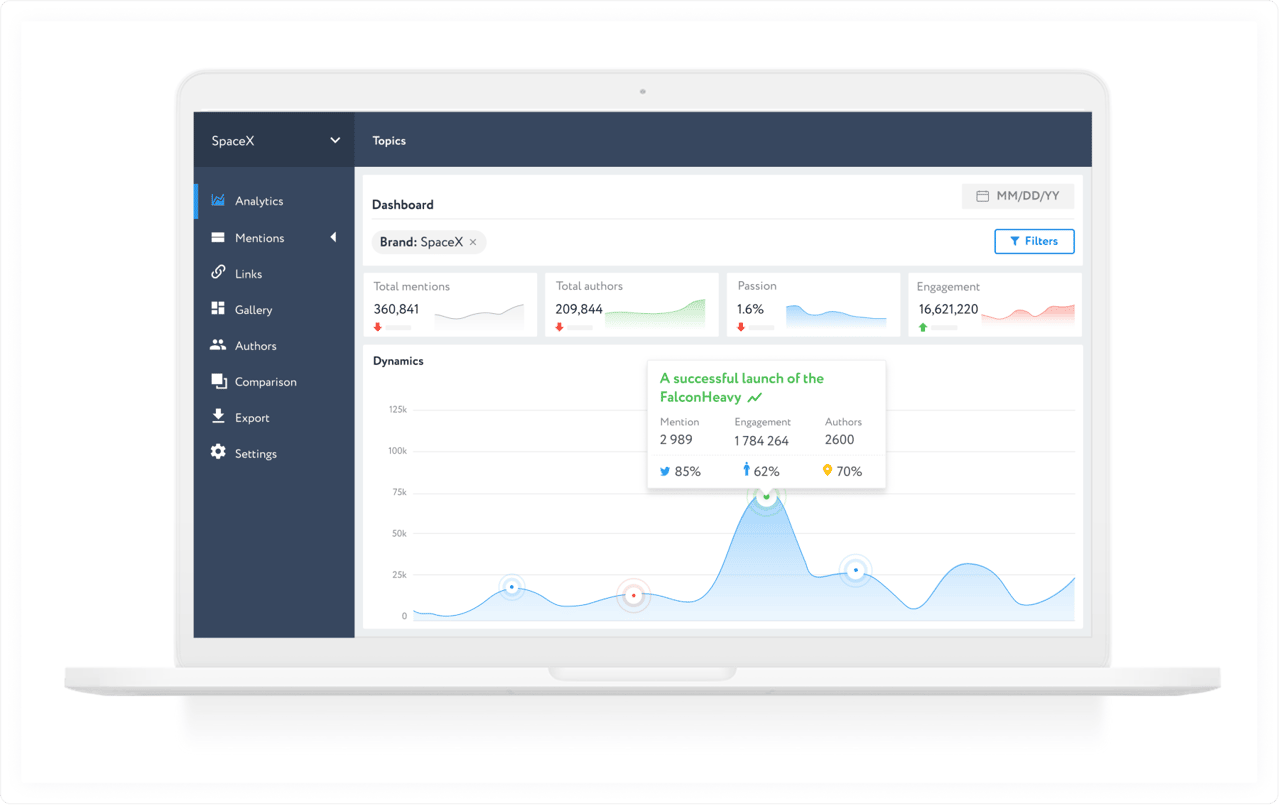

To measure performance over time, use a reliable tool that tracks sentiment, mention volume, and the ripple effect of your influencer collaborations. Social media analytics tools and social listening software like YouScan are essential for your campaign tracking and content strategy.
Tools that help you find micro influencers
There’s no shortage of platforms promising to connect you with the “perfect influencer”, but choosing the right one depends on your goals, team size, and how much control you want over the process. Here’s a look at five popular tools that support micro influencer discovery and campaign execution, each with a different strength.
YouScan
If you want to find micro influencers who are already talking about your brand—or naturally creating UGC in your niche—YouScan is a top choice. Instead of filtering by follower count, YouScan helps you discover truly engaged voices through smart influencer discovery powered by social listening and visual recognition. You can also track how influencer content performs after the collaboration, measuring sentiment, reach, and conversation quality in real time.
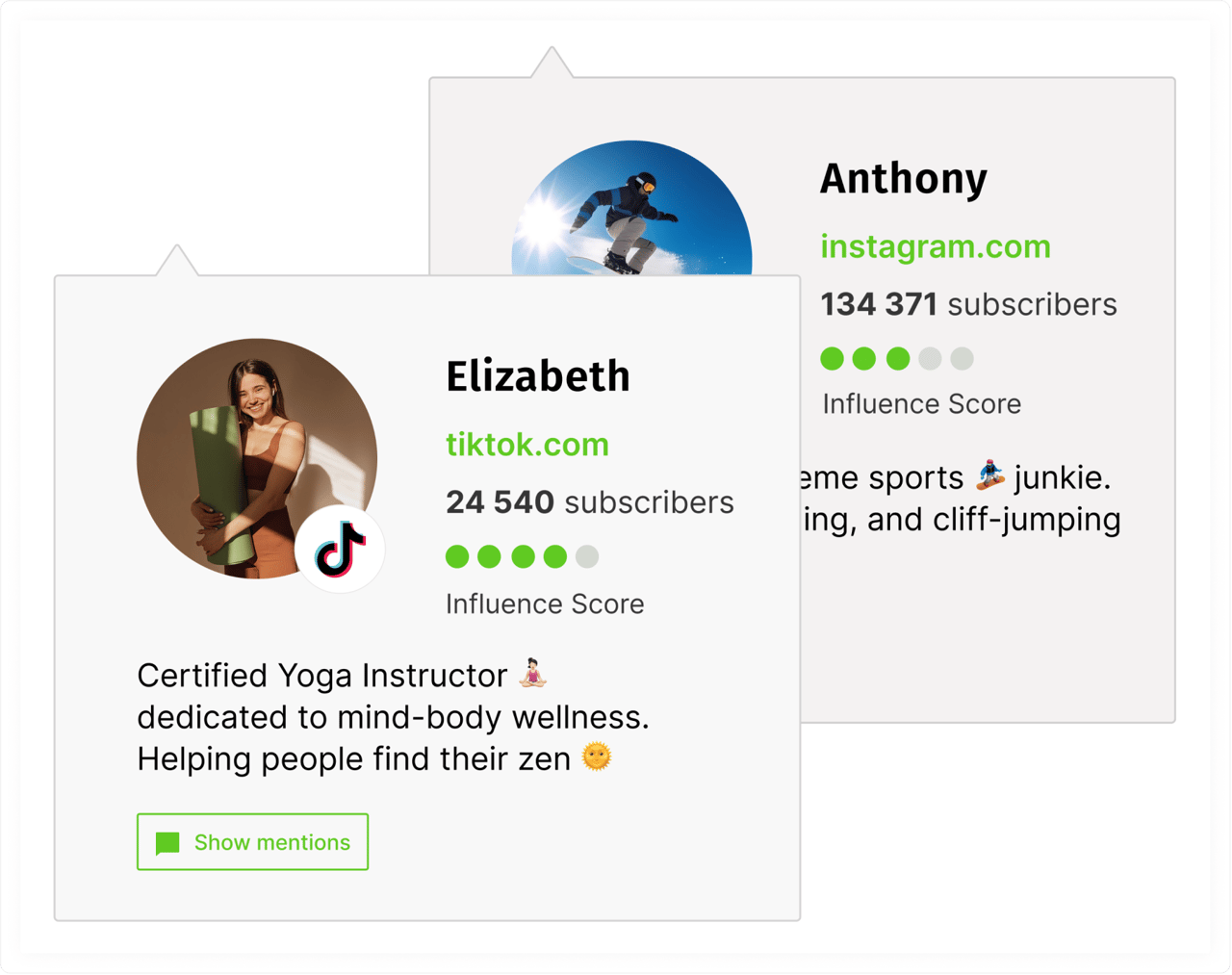



CreatorIQ
CreatorIQ is designed for large marketing teams that manage dozens (or hundreds) of influencers. It gives you access to a massive influencer database with advanced filters, historical data, and integration into your CRM or performance tracking tools. Best for brands that want structure, pipelines, and long-term brand ambassador programs.
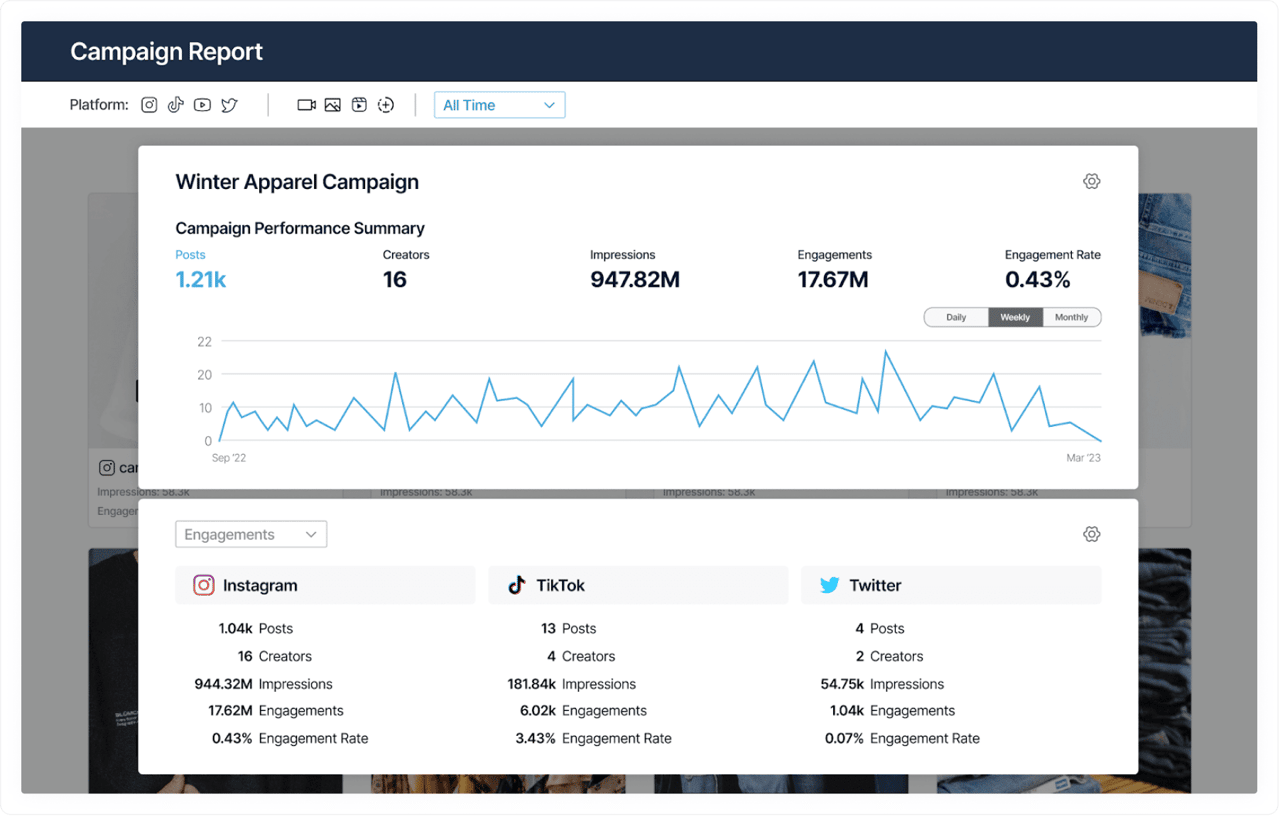

Captiv8
Captiv8 offers both discovery and end-to-end influencer campaign tools. You can search by interest, audience demographics, or content themes, and then use the platform to manage campaign briefs, payments, and performance metrics. A good fit for an influencer marketing agency that needs both keyword searches and a planning structure in one place.
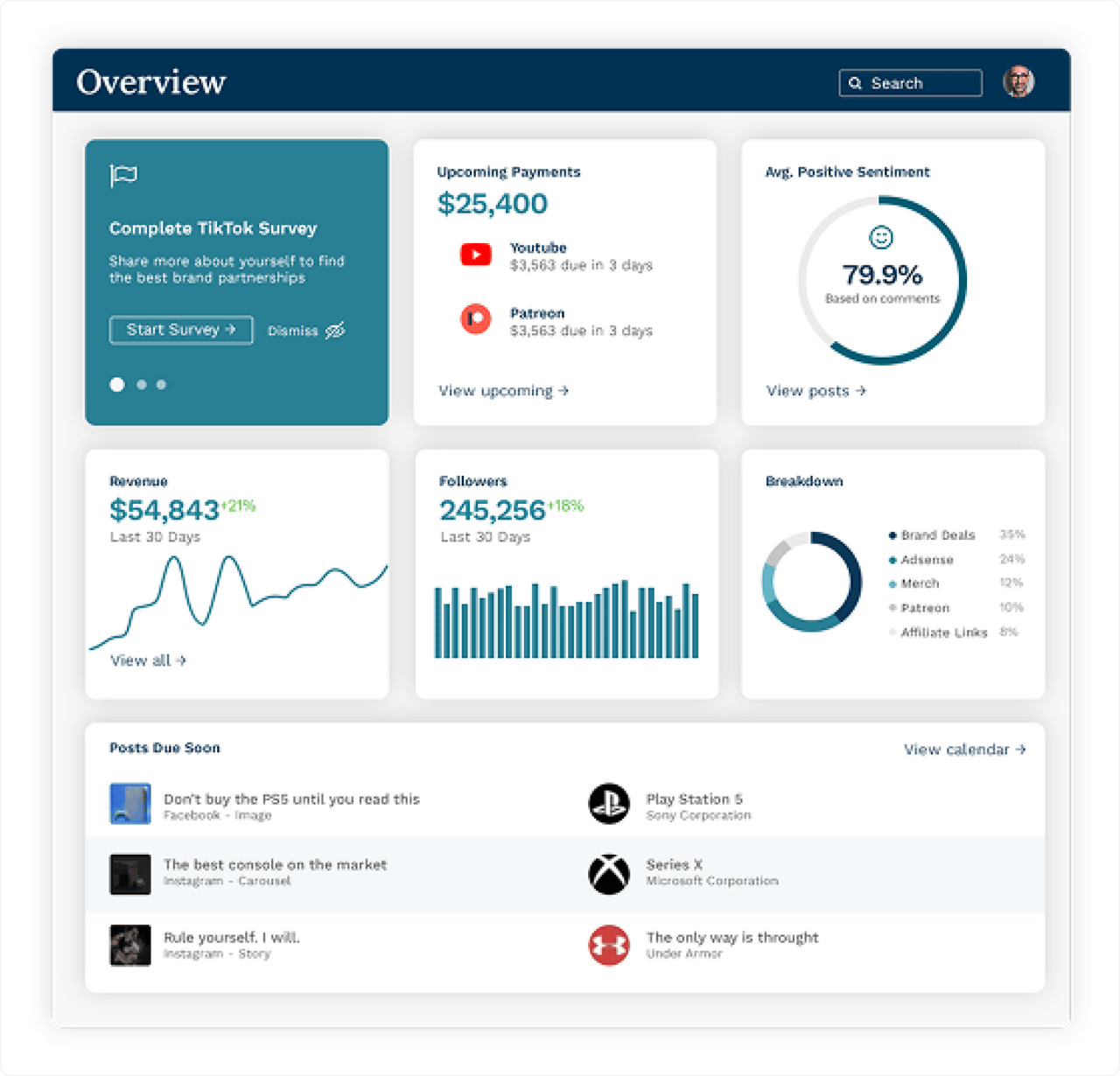

PopularPays
PopularPays combines influencer discovery with creative content creation support when working with micro influencers. If you’re looking to outsource the heavy lifting—sourcing, negotiating, and managing creators—they can help execute your campaigns. Useful for busy teams without in-house influencer managers.
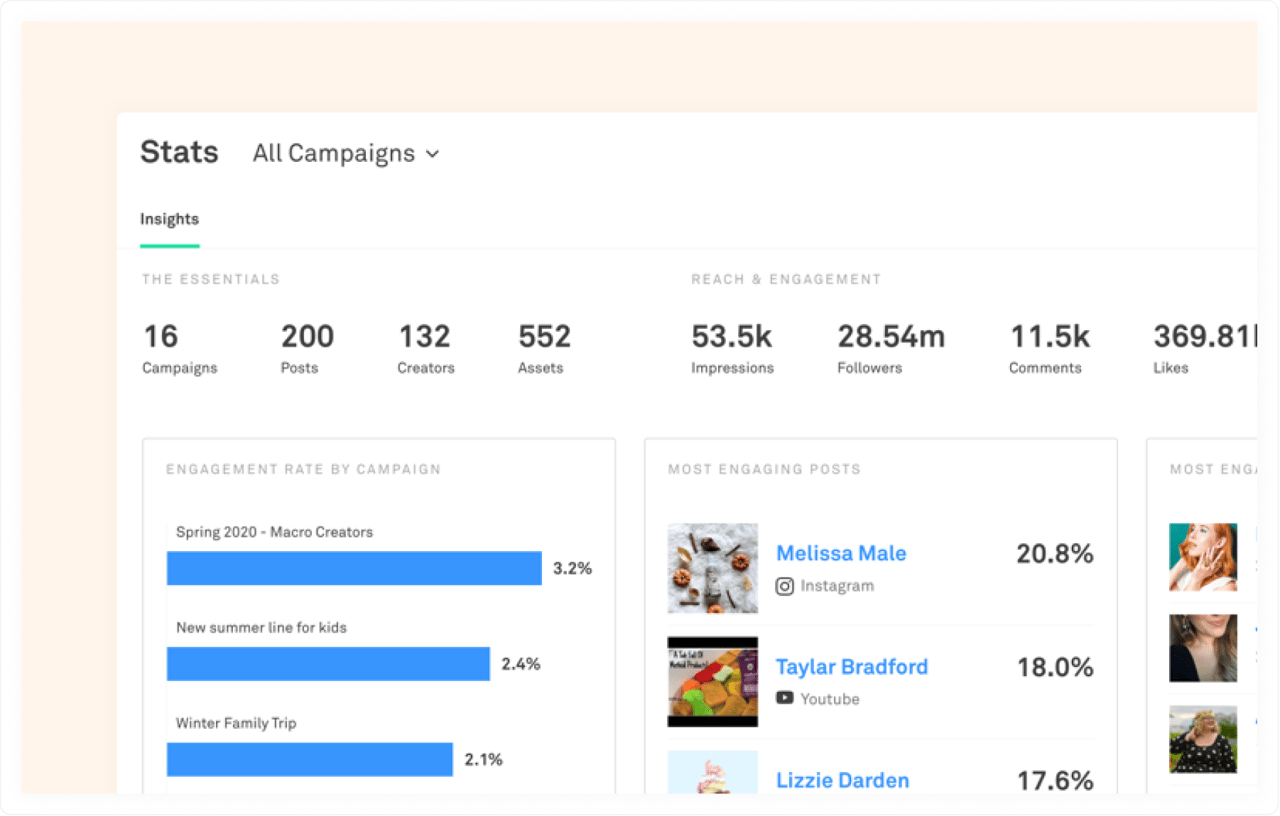

Bazaarvoice VIBE
Bazaarvoice VIBE focuses on connecting eCommerce brands with everyday shoppers who create product-centric content. It’s less about building long-term influencer relationships and more about amplifying product reviews, photos, and testimonials from real buyers. A smart choice if you're running a DTC shop and want UGC that converts.
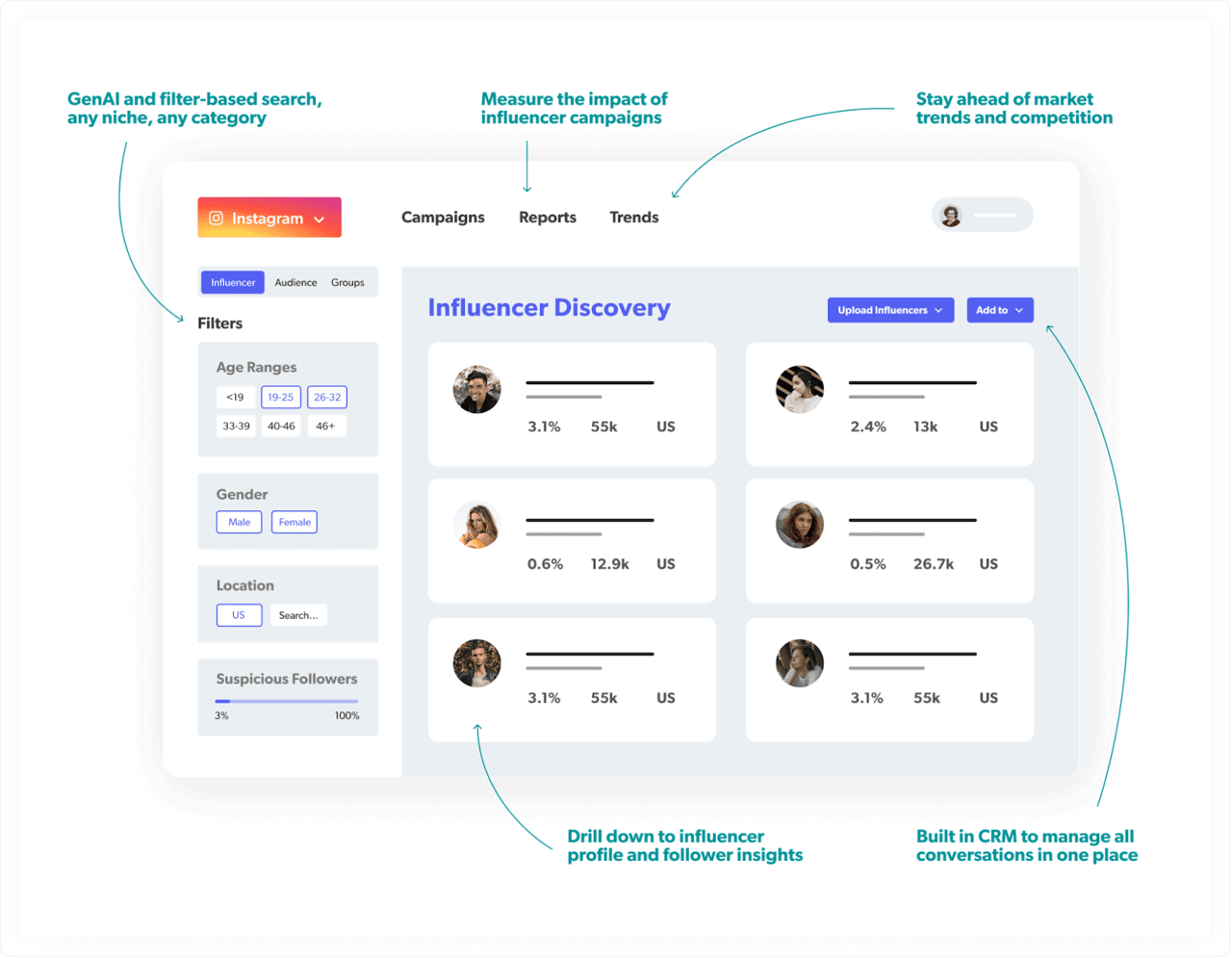

How to evaluate micro influencer quality (not just followers)
Before starting a collaboration, take a closer look beyond surface-level numbers. Here’s how to assess whether a micro influencer is truly a good fit for your brand:
Engagement rate benchmarks by platform – A 3–6% engagement rate is strong on Instagram, while TikTok’s average may trend higher. Use these benchmarks to filter out inflated followings with low activity.
Audience quality – Check whether their followers are real people, not bots, fake accounts, or purchased followers. Tools like HypeAuditor can give you a breakdown of authenticity, audience demographics, and suspicious patterns.
Types of comments – Look for meaningful conversations, not spammy one-word replies or emoji-only comments. Real communities ask questions, tag friends, and share their own opinions.
Storytelling ability and brand alignment – Review past content to see how they introduce products. Are they weaving it into a personal story or just holding it up for the camera? The best influencers use strong storytelling that creates better brand sentiment and supports long-term brand health for you.
Past collaborations – Scroll through their history. Are they bouncing from brand to brand every week, or do they choose partners that make sense for their audience? Frequent, disconnected sponsored posts can hurt trust and dilute brand sentiment.
Mistakes to avoid when finding micro influencers
Even the best-looking partnerships can backfire if you skip the fundamentals. Here are the most common mistakes brands make when working with micro influencers—and how to avoid them:
Focusing only on numbers – A high follower count doesn’t mean anything if their content doesn’t convert. The right influencers are the ones who influence behavior, not just rack up likes.
Relying only on databases – Don’t stop at influencer marketing platforms. You’ll likely miss smaller, emerging creators in the same niche who are already producing content your audience loves. These voices are often more relevant than anyone in a polished profile.
Not checking audience demographics – A micro influencer might look like a perfect fit, but if their followers are in a different region, age group, or mindset, the message won’t land. Always dig into who they’re actually reaching—and whether those people could be your potential customers.
Forgetting to analyze current trends – Timing is everything. Social media moves fast, and if you hop on a trend too late, the campaign will fall flat. Before launching, make sure your influencer content aligns with what's happening now—analyze current trends to stay ahead of the curve.
Skipping content alignment checks – If an influencer's values, tone, or past posts don’t match your brand, the content will feel forced, and audiences will notice. Review how they talk, what they care about, and how they handle past sponsorships.
No contract or unclear expectations – A DM agreement isn’t enough. Without clear terms, you risk misunderstandings about deliverables, deadlines, or usage rights—problems that can escalate fast.
Assuming you’ll deal with backlash if it happens – You should always be prepared. If something goes wrong—miscommunication, misrepresentation, or public backlash—scrambling for a plan in real time won’t cut it. A solid crisis management strategy should already be in place before any influencer post goes live.
Ignoring analytics after the campaign – Many brands track likes but forget to measure what really matters. Did sentiment improve? Did people comment or share? Did it move the needle? Post-campaign tracking is key to stronger reputation management and deciding whether to work with that influencer again.
Here's one high-profile mistake: Morphe's collaboration with beauty influencer James Charles, a drama worth $22 million. The partnership initially brought huge sales, but when controversies surfaced around the influencer, the brand faced major backlash for not acting sooner. The delayed response damaged their credibility and forced them into reactive crisis mode—something a stronger vetting process and crisis strategy might have helped prevent.


Source: Reddit
Final thoughts: Discovery is just the beginning
Micro influencer success doesn’t come from random outreach or endless profile scrolling. The best results happen when you know exactly who you're working with—and why their voice matters to your audience.
Social listening makes that possible. It helps you find creators who are already sharing relevant content, mentioning your category, or engaging with your niche. These are the people who can talk about your brand naturally, without needing a script.
When you lead with real insights, you spend less time guessing and more time activating the right influencers. And that’s what turns one-time posts into long-term value.
Get a demo of YouScan and discover the creators you’ve been missing.
FAQs
How do I find a micro-influencer?
Start by defining your niche audience, then use social listening or influencer platforms to spot creators who already post relevant content and engage real followers.
How much does it cost to hire a micro-influencer?
Rates vary based on platform, audience size, and content scope. Many work for free products or $100–$500 per post—some go higher if engagement is strong.
How to reach out to micro-influencers?
Keep it personal. Mention a recent post or shared interest, and clearly explain what you’re offering and why you think it’s a good fit.
How do I find micro-influencers near me?
Use location filters on influencer platforms or search tools. Social listening can also help uncover local creators already mentioning your product or category.

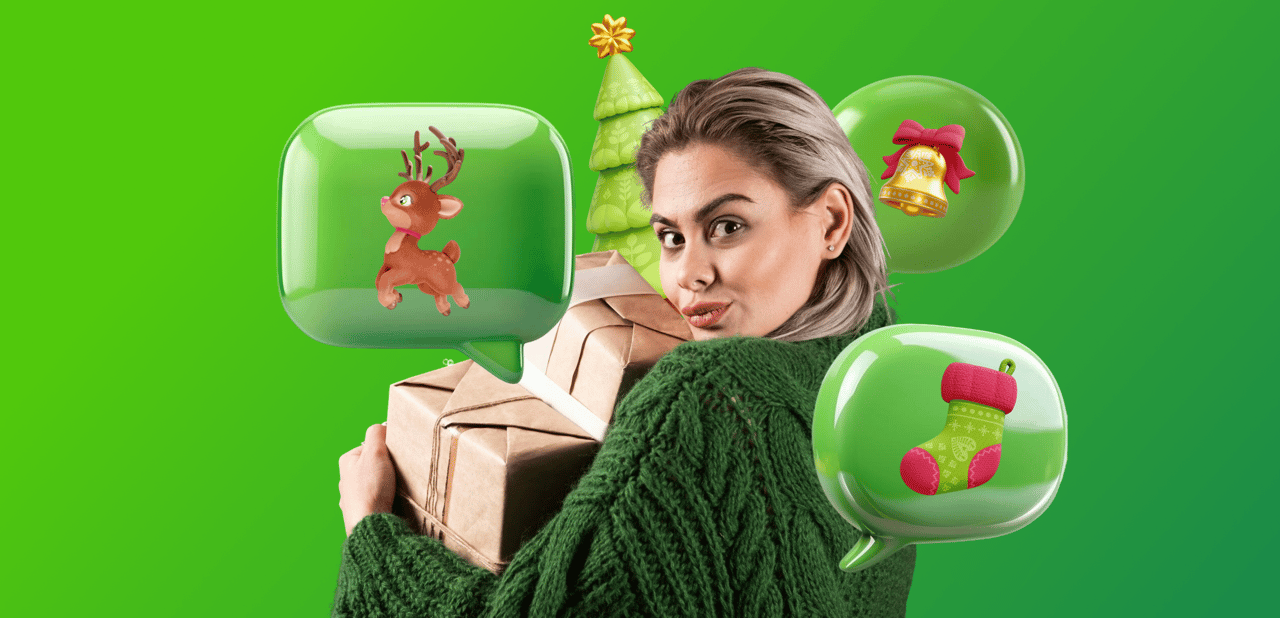
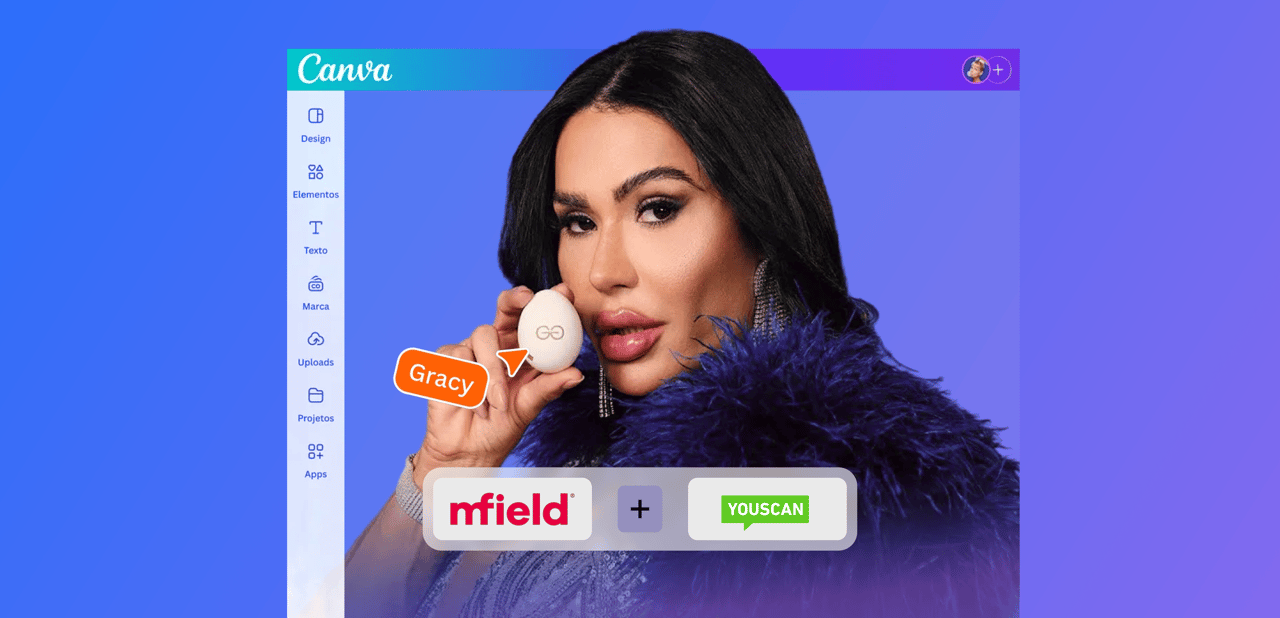
.png)